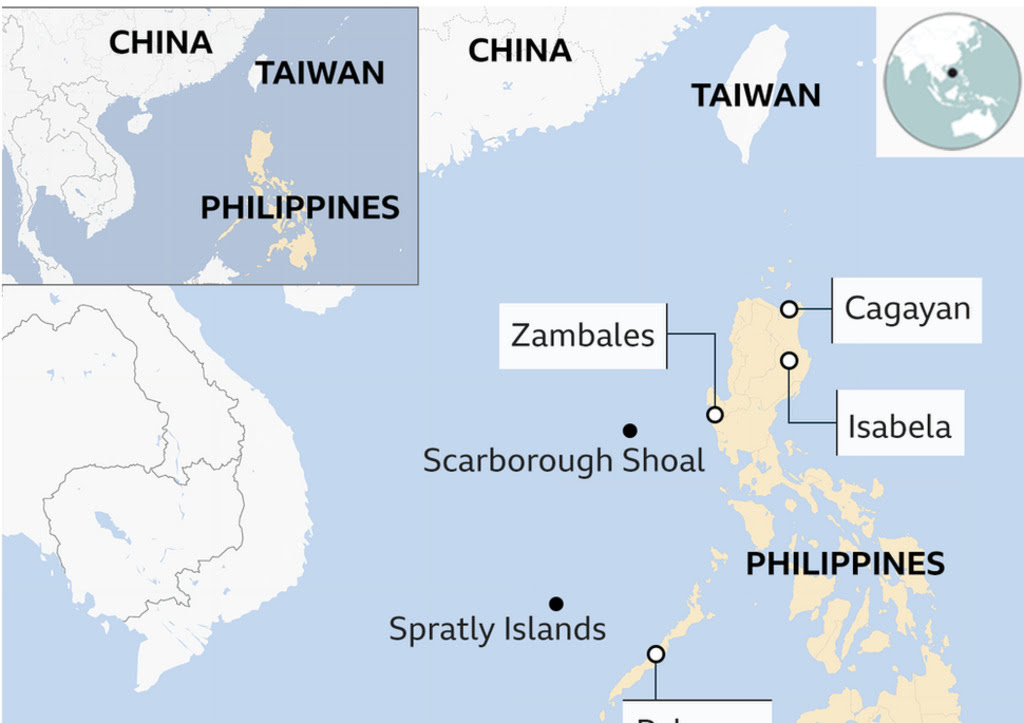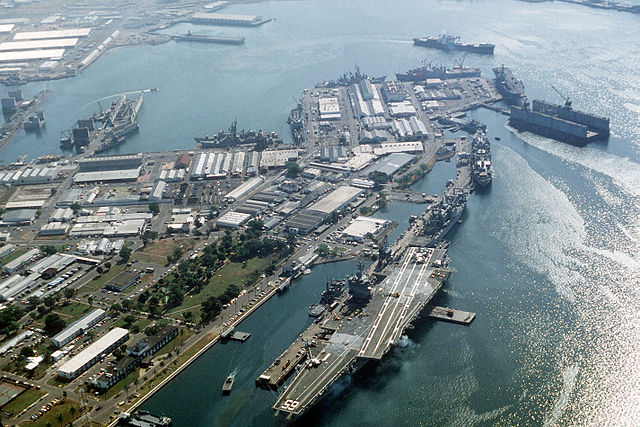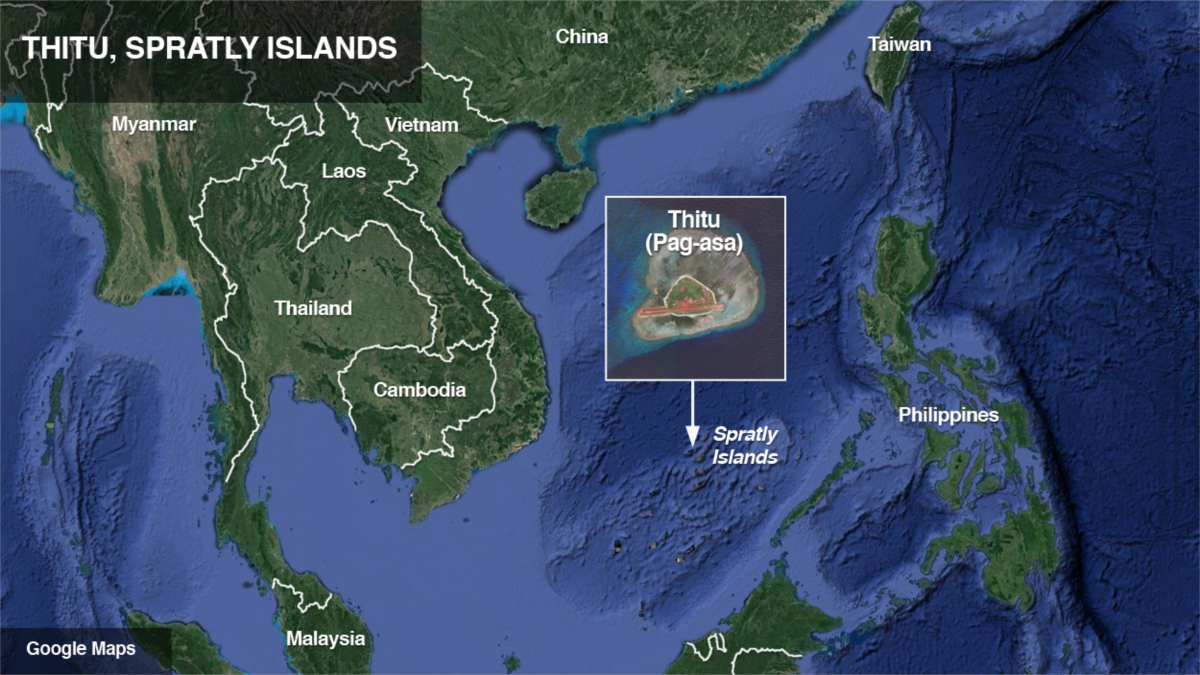News
Philippines and US Secure Deal for 4 Military Bases

The United States has gained access to four additional military bases in the Philippines, providing a critical piece of real estate from which to monitor the Chinese in the South China Sea and around Taiwan.
The agreement closes a gap in the arc of US alliances stretching from South Korea and Japan in the north to Australia in the south. The Philippines, which borders two of the most dangerous potential flashpoints – Taiwan and the South China Sea – had been the missing link.
The agreement, which partially reverses the US’s departure from their former colony more than 30 years ago, is significant.
“There is no contingency in the South China Sea that does not necessitate access to the Philippines,” Gregory B Poling, director of the Southeast Asia program at Washington’s Center for Strategic and International Studies told the BBC.
“The United States is not looking for permanent bases. It’s about locations, not bases.”
Under the Enhanced Defence Cooperation Agreement (EDCA), the US already had limited access to five sites; the new additions and expanded access, according to a statement from Washington, will “allow more rapid support for humanitarian and climate-related disasters in the Philippines, as well as respond to other shared challenges,” likely a veiled reference to countering China in the region.
On Thursday, US Defense Secretary Lloyd Austin met with Philippine President Ferdinand “Bongbong” Marcos Jr in Manila.
United States Accused of Posturing
The Unite States has not specified the location of the new bases, but three of them could be on Luzon, an island off the northern coast of the Philippines that is the only large piece of land close to Taiwan if China is excluded.
China criticized the agreement, saying “US actions escalate regional tension and undermine regional peace and stability”.
“The United States continues to step up military posture in this region out of self-interest and a zero-sum game mentality,” its embassy said in a statement.
Rather than bases where large numbers of troops will be stationed, the US is now seeking access to areas where “light and flexible” operations involving supplies and surveillance can be carried out as needed.
In other words, this is not a return to the 1980s, when the Philippines hosted 15,000 US troops and two of Asia’s largest American military bases, Clark Field and nearby Subic Bay.
The Philippine government finally called it quits in 1991. The Filipinos had recently deposed the despised dictatorship of Ferdinand Marcos, and returning the old colonial masters would strengthen both democracy and independence.
The Vietnam War had ended, the Cold War was winding down, and China was still a military underdog. So, in 1992, the Americans returned home – or, at least, the majority of them did.
After some 30 years, another Marcos has returned to the Malacaang Palace.
China Encroaching on Philippines Territory
More importantly, China is no longer a military underdog, and it is banging on the Philippines’ door. Manila has stood by, horrified but powerless to intervene, as Beijing redraws the map of the South China Sea, or the West Philippine Sea, as Manila prefers to call it.
China has constructed ten artificial island bases since 2014, including one at Mischief Reef, deep within the Philippines’ own exclusive economic zone, or EEZ.
According to Herman Kraft, a political science professor at the University of the Philippines, relations between Manila and Beijing had been relatively trouble-free up until that point.
“In the South China Sea, we had a live and let live situation. However, in 2012, they attempted to seize control of Scarborough Shoal. The islands were then built beginning in 2014. China’s land grab altered the relationship.”
“We have very limited capability against the Chinese threat,” says Jose Cuisia Jr., former Philippine Ambassador to the United States.
He claims that China has repeatedly broken promises to not militarize their new South China Sea bases.
“The Chinese have militarized those features, putting more of our territory at risk. Only the United States has the ability to stop them. The Philippines cannot do it on its own.”
US troop violence and abuse
However, thousands of US marines and airmen will not be filling the red-light districts of Olongapo or Angeles City this time. In the 1970s, Olongapo, which was close to a US naval base, was a hub for the illegal sex trade.
The history of US troop violence and abuse in the Philippines is still a sensitive subject. When their American fathers returned home, an estimated 15,000 children were left with their Filipino mothers.
“We have a long history of inequality in our relationship,” says Renato Reyes, secretary general of the left-wing New Patriotic Alliance. “The Philippines has had to bear the social costs. Rape, child abuse, and toxic waste have all occurred in the past.”
The Philippines’ left-wing groups are strongly opposed to the United States’ return.
While there will be fewer troops than previously requested, Washington is now requesting access to several new locations, some facing the South China Sea and others facing north towards Taiwan. According to unofficial reports, there are options in Cagayan, Zambales, Palawan, and Isabela.
The first is facing Taiwan, the second is facing the Scarborough Shoal, and the third is facing the Spratly Islands. New US facilities will be built within existing Philippine bases. US troops will arrive in small groups and on a rotating basis.
According to Mr. Poling, the goal will be to deter further Chinese territorial expansion in the South China Sea while also providing a location for the US to monitor Chinese military movements around Taiwan.
Oppose China’s Rise in the South China Sea
“Without this alliance, the Philippines has no way of deterring China,” he says. “It has purchased BrahMos missiles from India. The United States wishes to deploy Tomahawk cruise missiles. They can hold Chinese vessels together.” With rising fears of a conflict over Taiwan, the Philippines could serve as a “rear access area” for US military operations or even a safe haven for refugees.
However, Professor Kraft warns that Manila will not become a full-fledged member of an American alliance to challenge or oppose China’s rise.
“The Philippines, unlike Australia and Japan, is not directly challenging Chinese interests in the South and East China Seas. President Marcos desires good relations with the United States. However, he also desires good relations with China for economic reasons.”
Beijing has also stated that it will not allow a new base agreement between Manila and Washington to destabilize relations with its neighbour.
China’s state-run Global Times accused the US of “setting a trap for the Philippines” and “trying to push the Philippines to the frontlines of confrontation with China” in an editorial published to coincide with the arrival of the US defence secretary in Manila.
“We are once again caught in the middle,” says Mr Reyes, who believes China is a capitalist imperialist power just as much as the US.
“The Philippines retains a colonial mentality, viewing the United States as its big brother.”
“People forget that there are between 150,000 and 200,000 Filipinos in Taiwan,” says Mr Poling.
































